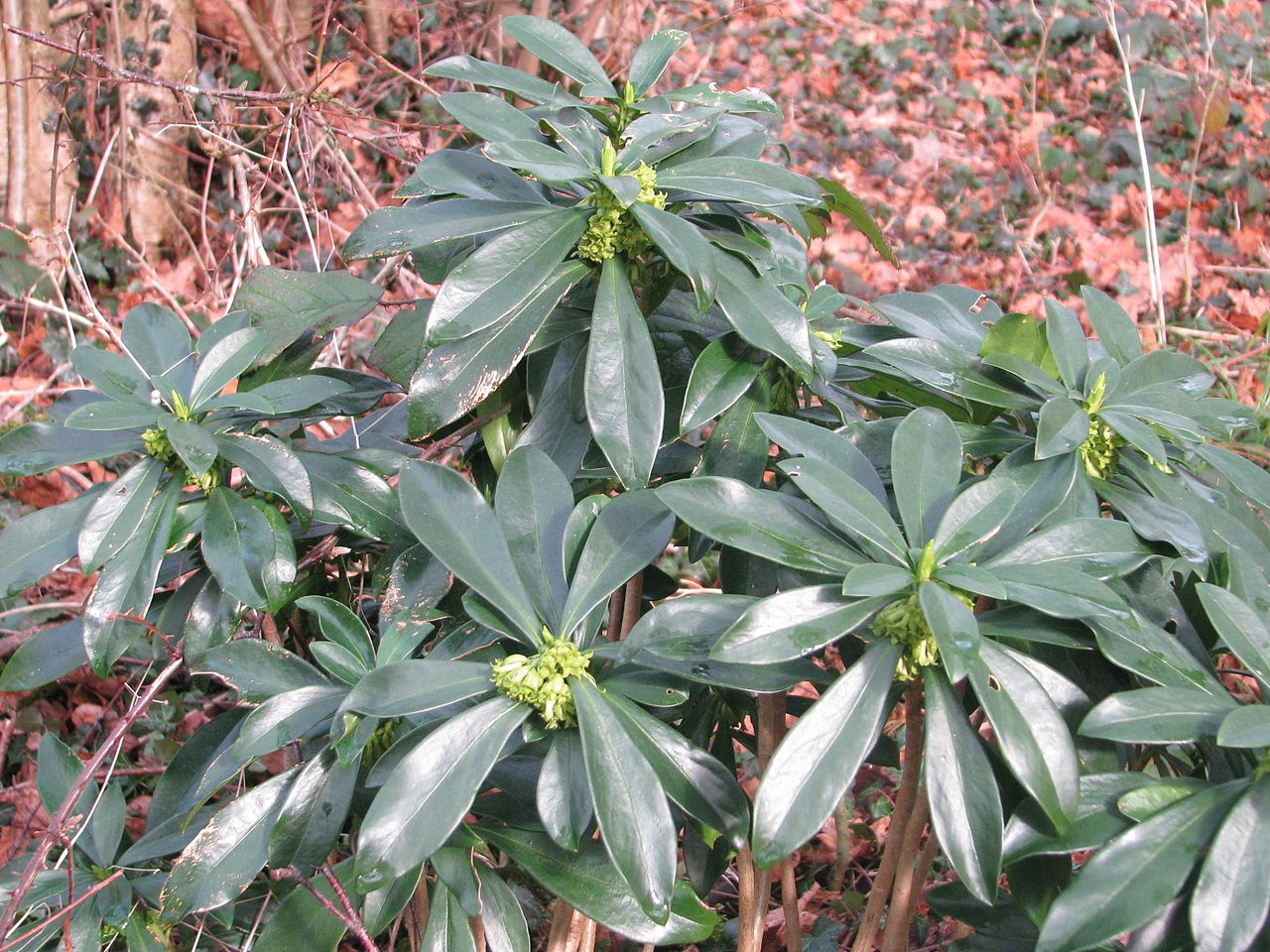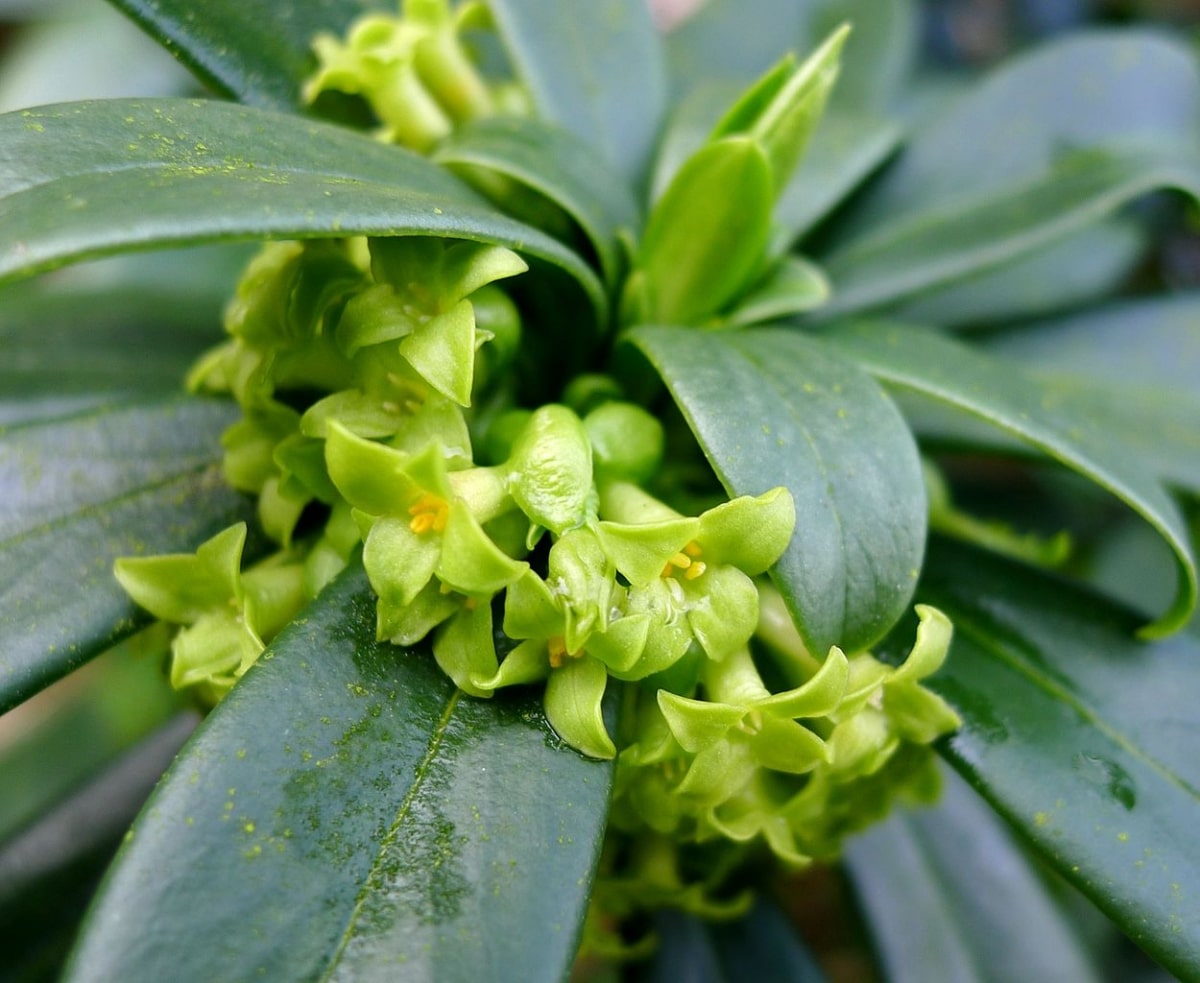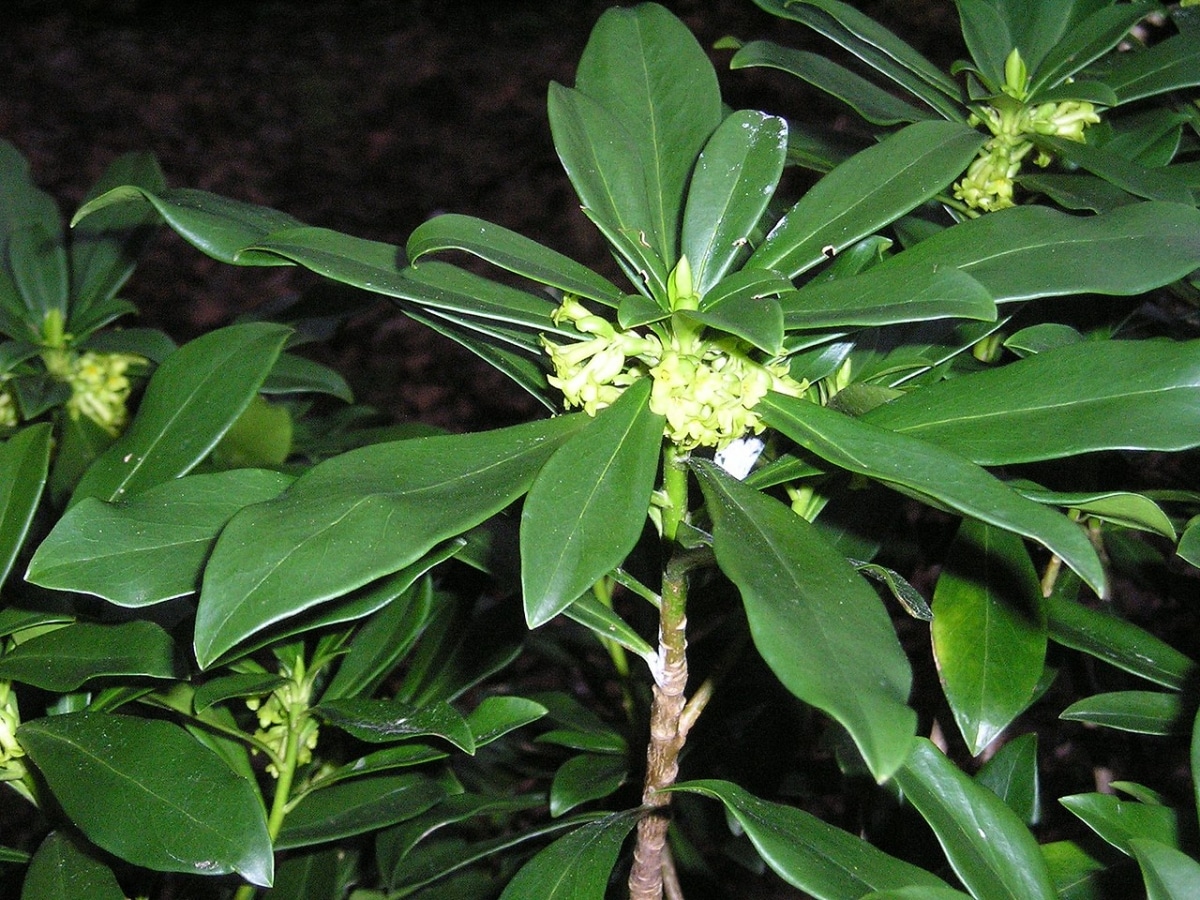
Image - Wikimedia / peganum
La daphne laurel it is a very beautiful shrub: with lanceolate leaves of a glossy dark green color, with a height of no more than one meter, and a compact bearing. Its cultivation in gardens or in pots is simple, so much so that you will hardly have to be aware of it.
It produces flowers that, although they are not as showy as those of other species of the genus, such as the daphne smells, If that it is a plant that looks great almost anywhere.
Origin and characteristics of daphne laurel

Image - Wikimedia / gailhampshire
La daphne laurel It is an evergreen shrub known as oleander, male wormwood, laureola, lobado grass, salamunda or blacksmith. It is a native of Europe, including Spain. We can find it in rocky areas, bushes and also mountain grasslands, up to 2000 meters above sea level. It reaches a height of 1 meters, and has a highly branched bearing. The branches are alternate, and their bark is light brown when they age.
Its leaves are lanceolate, have a sharp or rounded tip, and a petiole. They are dark green on the upper side, and lighter on the underside. They closely resemble those of the trees and shrubs of the genus Laurus (laurel).
Blooms in spring and into early summer, from May to July in the Northern Hemisphere. The flowers are green and are grouped in clusters which sprout in the axils of the leaves. They measure between 7 and 12 millimeters in length, the female ones being shorter than the male ones. The fruit measures approximately 10 x 8 millimeters, is fleshy and contains an ovoid-shaped seed inside.
How do you take care of daphne laurel?
Laureola is a plant that grows well in gardens, but it is also interesting to have it in a pot when it cannot be planted in the ground. As it does not grow fast or very much, it is possible to control it very easily. In addition, its root system is not invasive, so we will not have to worry about anything.
Still, your needs must be taken into account so that no surprises arise:
Location

Image - Wikimedia / peganum
La daphne laurel it is a bush that it has to be kept in the shade, since the direct sun "burns" it. Of course, although it has to be protected from the sun, this does not mean that it can be in a place where there is hardly any light: like any other plant, it needs light to be able to photosynthesize, and therefore also to grow and stay in good health .
Soil or substrate
- Garden: grows in acidic, neutral and slightly alkaline soils, with a pH between 5.5 and 8.
- Flower pot: as it is not demanding, almost any type of substrate can be used: the universal one (for sale here), mulch (for sale here), coconut fiber (for sale here), etc. You have to choose a container that has holes so that the water that has not been absorbed comes out through them.
Irrigation
Laureola is not a shrub that resists drought, so it is not suitable for xero-gardens, for example. However, it is not one of those that has to be watered frequently either. Usually, with one watering a week during the winter, and with about two or three a week the rest of the year it can keep up well.
Just avoid wetting the leaves during watering, as they will burn. Likewise, if you have it in a pot, it is better not to put any plate or tray under it, since the water that does not leak has to move away from the roots.
Subscriber
In addition to watering it from time to time, it is important that it is fertilized regularly, especially during its growing season. When temperatures are between 15 and 35ºC, it will need a little extra "food" to allow it to develop normally. For this reason, we advise to fertilize it with liquid fertilizers if it is in a pot, since this way the roots will absorb it somewhat faster; If it is planted in the ground, you can use granulated or powdered fertilizers.
Which ones to use? Any of these will do:
- Fertilizer for green plants: Since it does not produce particularly showy flowers, you may be more interested in spending energy growing rather than blooming. Therefore, this product will be very useful to you.
- Natural manure guano: comes from bats or sea birds. Being natural, it will help you to pay your daphne laurel whether you grow it in a pot or in the ground. In addition, its effects are visible shortly after application.
- Compost, manure: whether you usually do compost as if you have herbivorous animals, you can use this as compost. Just keep in mind that if you use manure, it has to be left to dry for a week or ten days in the sun, especially if it is chicken so that it is not so concentrated.
Planting or transplanting time

Image - Wikimedia / john shortland
Transplant it will be done in early or mid-spring, once winter is behind us. If it is in a pot, it must be changed to a larger one about every three years. If in doubt, before doing anything, check to see if roots grow out of the drainage holes, otherwise, when the plant is removed, the soil bread will crumble, and consequently some roots could be damaged.
Rusticity
El daphne laurel resist up to -15ºC.
What did you think of this bush?